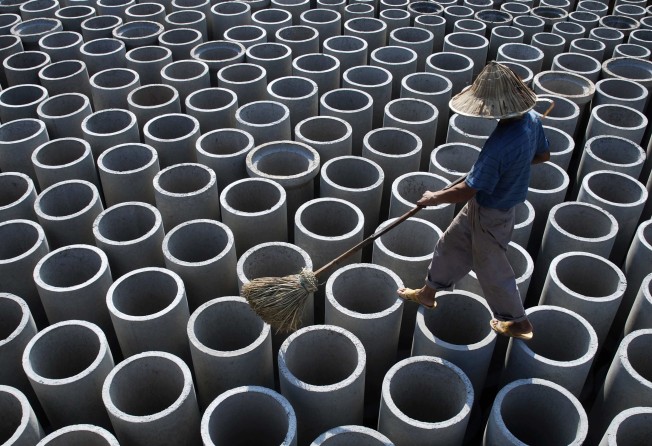China giants CNBM and Sinoma merge to become world’s largest cement maker, eye Silk Road growth
Country’s largest and fourth-largest cement producers aim for 100 plants in three to five years

China National Building Material (CNBM), which will merge with rival China National Materials (Sinoma) to form the world’s largest cement maker and cement plant builder, aims for the combined entity to manage 100 plants in countries covered by the Belt and Road Initiative in three to five years.
CNBM and Sinoma, the country’s largest and fourth-largest cement producers, have developed cement and clinker plants globally with 520 million tonnes of annual capacity in recent years. They currently operate 35 plants in countries along the ancient Silk Road, where China is pushing for more trade and investment.
The companies are listed in Hong Kong and their merger was approved in a shareholders meeting on Wednesday.
“In our engineering business, we have been transforming from being pure contractors for engineering, procurement and construction to also provide management services after the plants are built,” Chang Zhangli, CNBM’s board secretary, told the South China Morning Post. “We have collected for them plenty of data from their operations, which have helped us become better at cutting their manufacturing costs.”
In parts of Africa and the Middle East, where plant management expertise is lacking, the companies have stationed their managers after work on building plants has been completed.
“Having more control over plant management is advantageous for us since we provide quality warranties to the plant owners,” Chang said. “Besides, by having our staff there, they can help us learn about and develop neighbouring markets, so that we can become deeper rooted regionally.”
Sinoma has about 65 per cent of the global cement plant construction market excluding China, and it competes with multinational majors such as Switzerland-based LafargeHolcim, according to Sinoma’s vice-president and board secretary, Gu Chao.
“Parts of Africa are similar to where China was in the 1970s and 80s, where opportunities abound … In Ethiopia and Zambia, we have even built comprehensive construction materials manufacturing and logistics parks to cater to the local demand,” he said.
In Saudi Arabia, Sinoma has built more than 20 million tonnes of cement production capacity, accounting for about 70 per cent of the country’s total capabilities.
While the 520 million tonnes of annual capacity developed by CNBM and Sinoma globally is small compared with China’s capacity of about four billion tonnes, it represents an avenue for long-term growth.
With fixed-asset investment growth slowing from an average of 23.4 per cent in the decade to 2014 to below 10 per cent since 2015, China’s cement production growth rates have fallen from 13.2 per cent in the decade to 2013, to being largely stagnant since 2014.
By merging with Sinoma, CNBM can lower its debt leverage, reap operational cost savings and reduce earnings volatility.